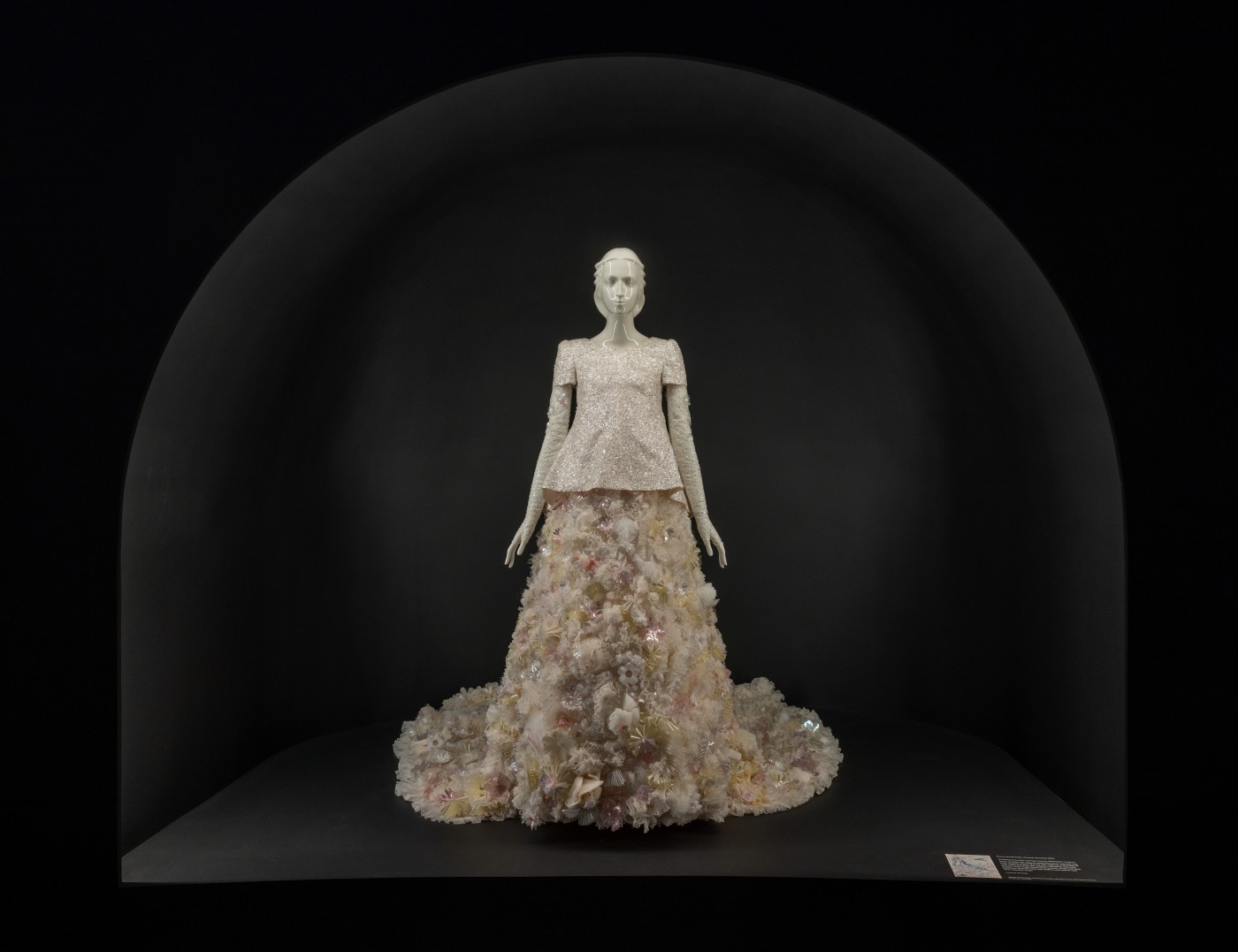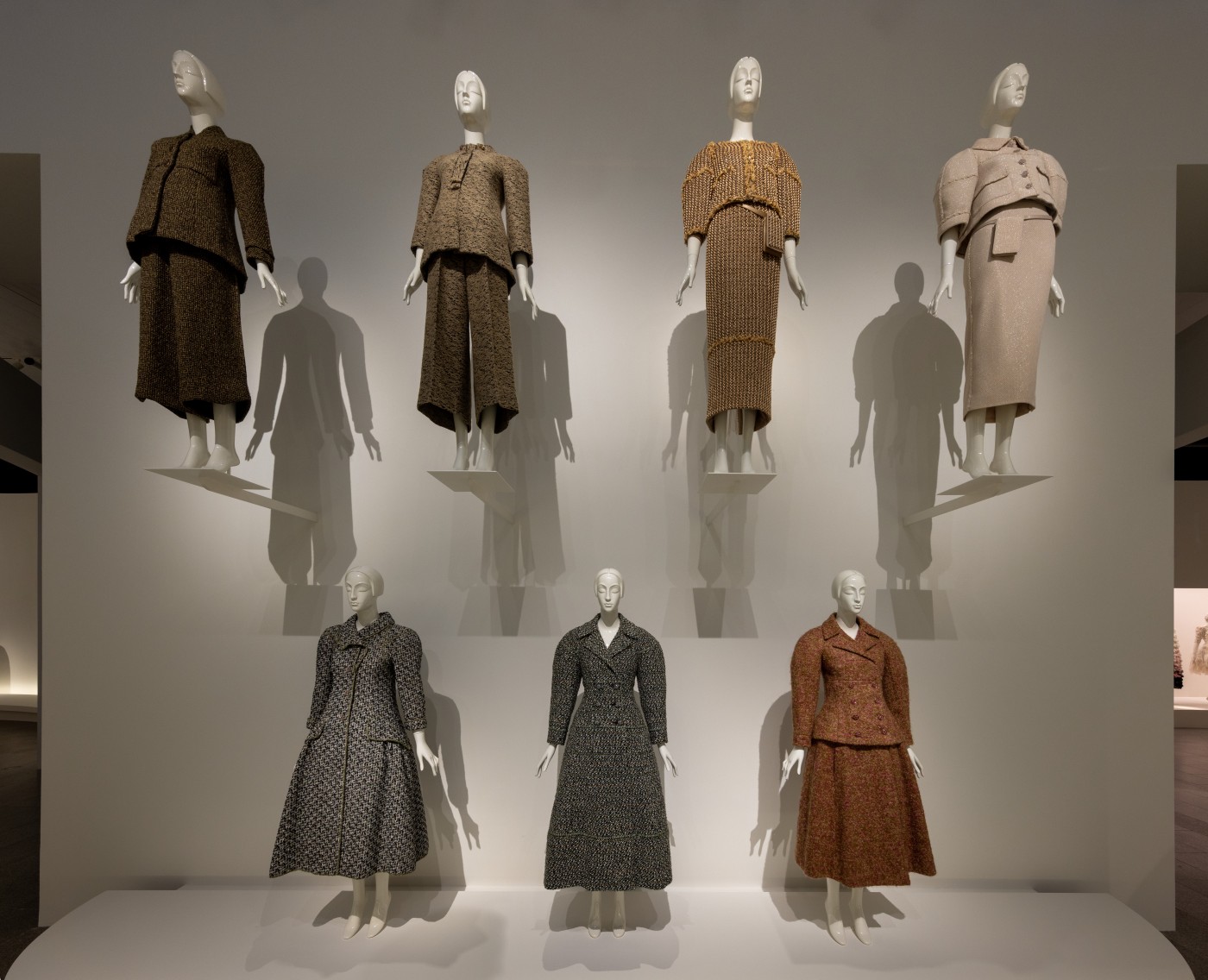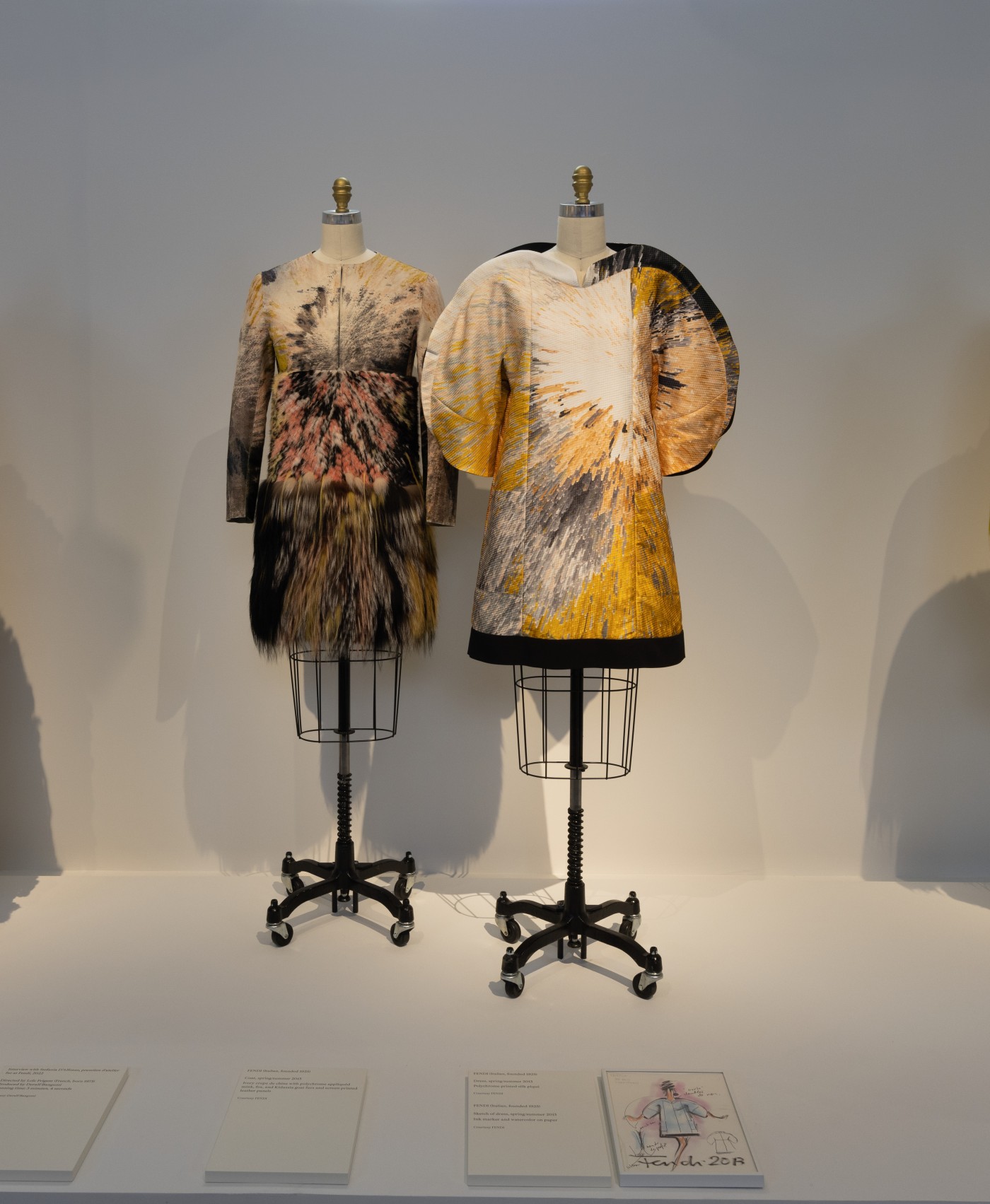- youtube
- bluesky
- Home
- About
- Costume Journal
- Membership
- Conference & Events
- Grants & Awards
- News & Social
In this week’s blog, News Editor Babette Radclyffe-Thomas reviews the Costume Institute’s spring exhibition at the Metropolitan Museum, New York.
Fashion legend Karl Lagerfeld’s (1933-2019) design approach and stylistic vocabulary are the centrepiece of the Met Museum's most recent fashion exhibition.
The curatorial aim of the exhibition is to focus on Lagerfeld’s extensive body of work and his usage of ‘lines’ to communicate his design ethos. In this context, the ‘lines’ are visualised as aesthetic and conceptual themes that have appeared throughout Lagerfeld’s work designing for some of the most iconic fashion houses of the twentieth century, from the 1950s to his final collection in 2019.
The exhibition theme was inspired by William Hogarth’s book The Analysis of Beauty, which details Hogarth’s concept of the ‘line of beauty’ or the ‘serpentine’ at the core of his art and aesthetics theories. The curatorial concept of a binary between the serpentine line and the straight line runs throughout the exhibition where the serpentine line demonstrates Lagerfeld’s romantic, decorative and historicist approaches, while the straight line communicates his classicist, modernist and minimalist styles.
Andrew Bolton, Wendy Yu Curator in Charge, The Costume Institute, commented: “The exhibition explores Lagerfeld’s complex working methodology, tracing the evolution of his fashions from the two dimensional to the three dimensional. The fluid lines of his sketches found expression in recurring themes in his fashions, uniting his designs for Chanel, Chloé, Fendi, Patou, and his eponymous label, Karl Lagerfeld, creating a diverse and prolific body of work unparalleled in the history of fashion.”
More than 200 objects are on display, with garments frequently presented next to the original Lagerfeld sketches which act not only fashion illustrations, but also detailed technical drawings.
The exhibition starts with a focus on Lagerfeld’s relationships with his premières d’atelier, communicating the collaborative nature of his work with the artisans who turned Lagerfeld’s 2D sketches into 3D designs. This thoughtful inclusion highlights the team of talent that lies behind every creative director and designer.
Lagerfeld’s early career as a design assistant as artistic director at French couture houses Balmain and Patou respectively is presented, as well as a more recent reference to Lagerfeld’s working style with a life-size mock-up of his book-strewn desk demonstrating the vast array of inspirations and references he incorporated into his work across fashion, photography, stage design, costume and much more.
The following nine sections or ‘sublines’ of the exhibition are presented as binaries: feminine and masculine, romantic and military, rococo and classical, historical and futuristic, floral and geometric, figurative and abstract. At the heart of each of these sections one garment is presented on a podium showing the two dualities converging.
The exhibition includes classic Lagerfeld designs such as his versions of the Chanel suit and show-stopping wedding dresses. But it also includes unexpected treats such a letter to his mother detailing his experience of winning the Woolmark award and his observations on the purple velvet Pierre Cardin cravat that he wore to the ceremony: “Whether it was very tasteful, I don’t know; but it was being noticed, and only that is important to me. I don’t care what people are saying. What matters first and foremost is that they are saying something at all.”
This is not a retrospective by any means, in fact, the exhibition omits much detail about Lagerfeld’s life. There are no displays of Choupette or an investigation into his life and career and especially considering how controversial Lagerfeld enjoyed being, this marks a striking curatorial choice. Instead, the focus of the exhibition is solely on garments. The exhibition is displayed in a fairly traditional format although a video installation by filmmaker Baillie Walsh that includes never-before-seen archival footage of Lagerfeld by Prigent is displayed across 81 iPhones and is an unexpected multi-media inclusion.
The final room is filled with designs that reveal Lagerfeld’s surrealist tendencies or his likeness in his distinctive black and white ‘uniform’. The curatorial aim was to present the ‘satirical line’ in this room. A final case is a bittersweet statement: Lagerfeld’s own slim-cut jacket by Hedi Slimane, his personal jewellery from Chrome Hearts, an assortment of fans and sunglasses and fingerless gloves by Causse and Chanel. The uniform which the world knew Lagerfeld by is now itself in a museum case.
The exhibition was also the theme of The Costume Institute Benefit (commonly known as The Met Gala), and the exhibition ran May 5 to July 16, 2023.
Babette recently visited The Sassoons exhibition at the Jewish Museum; read her review here.
Image gallery

Gallery View, Floral Line. Photo © The Metropolitan Museum of Art

Gallery View, Structural Line. Photo © The Metropolitan Museum of Art

Gallery View, Premières d’Atelier (FENDI) Photo © The Metropolitan Museum of Art

Gallery View, Historical Line. Photo © The Metropolitan Museum of Art